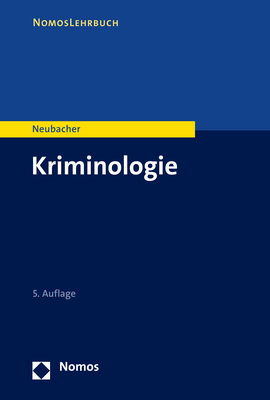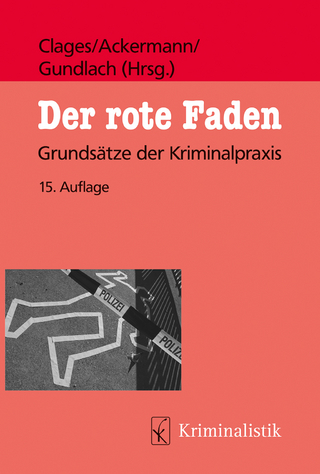
Transnational Organized Crime and Gangs
Rowman & Littlefield (Verlag)
978-1-5381-2818-3 (ISBN)
Transnational organized crime groups have tremendous power and money, which means they have the ability to pay hackers to defeat cybersecurity measures. The dangers posed by organized crime groups are nothing new. For decades, these groups have launched sophisticated attacks against individuals as well as major corporations. Billions of dollars have been stolen every year, and large, continuous hacks of our highly sensitive computer systems. What is new, is the acknowledgement that cybersecurity should be high priority for every individual, company, and government entity.
While Department of Homeland Security’s involvement in cybersecurity is a step in the right direction, more measures need to be put in place that facilitates collaboration across industries and government entities. Transnational organized criminal elements will continue to find creative and effective ways to use technology for illegal activity. They will continue doing so unless law enforcement works closer with policymakers to enact uniform laws, regulations, and policies beyond current practices.
Transnational Organized Crime and Gangs explores effective programs, policies, technologies and builds a body of knowledge to guide future regulations and resources for our criminal justice leaders of tomorrow.
Robert M. Brzenchek is a professor of Criminal Justice in West Palm Beach, Florida where he educates the next generation of Criminal Justice professionals at various universities. In the public sector, Brzenchek worked with dozens of national agencies, governments, and international organizations in the use of advanced technologies and information sharing to detect violations of international laws, and threats as a Navy Intelligence Specialist and police officer in Washington, DC. Brzenchek has worked with organizations as diverse as DHS, DOD, major corporations, ports and public utilities on security matters, risk management, policy, and technologies; has served as a subject matter expert and testified in court cases; as well as lectured throughout North America and Mexico. Brzenchek has published several articles on gangs, emergency management, threat assessments, homeland and international security, and cybersecurity which may be found in PoliceOne.com and CorrectionsOne.com. He has also serves as a Board member of SERAPH, member of the OSS Society; Navy League; ILEETA, IADLEST, and member of the US Coast Guard Auxiliary.
Chapter 1: Introduction
Problem
Purpose
Theory
Concepts
Review Questions:
What is the root problem?
What is the Plan Do Check Act theory?
Are gangs in nations like Russia or China that can be particularly resourceful and dangerous – secretly sponsoring hackers’ efforts and protecting them from international law enforcement?
Chapter 2: Prevention
Environment
Education
Socio-Economics
Summary
Review Questions:
Does compliance with standards and laws protect a business and executives from liability?
What education is appropriate to prepare a cyber professional for today’s cyber threats?
What is the estimated economic loss from cyber crime annually?
Chapter 3: Historical First-Person Accounts
Washington DC metro
Houston, TX
New York City metro
Summary
Review Questions:
What are your thoughts and impressions on the first person accounts?
What takeaways can you apply to your current or future cyber career?
Can you be as flexible to move around the country/world to complete training/work?
Chapter 4: Intervention
Purpose of ISO 27001/Cybersecurity Measures
Theory of ISO 27001/Cybersecurity Measures
Concepts of ISO 27001/Cybersecurity Measures
Integrating ISO 27001/Cybersecurity Measures
Review Questions:
What is an ISMS?
What is ISO 27001?
How do you integrate the ISO 27001 cradle to grave?
Chapter 5: Suppression
Problem
Purpose
Concepts
Operationalization
Summary
Review Questions:
Do you think the newly created DHS National Risk Management Center will assist in implementing cybersecurity measures for financial services, telecommunications, and energy sectors?
Are laws/measures such as Data Protection Law, NYS Cyber Security Law 18, Federal law, Including the Federal Information Security Management Act (FISMA), NIST 800-171, HIPAA, and GDPR enough for cyber professionals to protect our infrastructure?
Are people, processes, and technologies vulnerabilities in cyber security?
Chapter 6: Findings and Conclusions
Recommendations
Review Questions:
What are your recommendations for America to bolster cyber security defenses?
Do you think our current cyber security measures adequate?
What are your next steps to share your knowledge obtained from this book?
| Erscheinungsdatum | 24.09.2021 |
|---|---|
| Verlagsort | Lanham, MD |
| Sprache | englisch |
| Maße | 160 x 241 mm |
| Gewicht | 485 g |
| Themenwelt | Literatur ► Biografien / Erfahrungsberichte |
| Recht / Steuern ► Strafrecht ► Kriminologie | |
| ISBN-10 | 1-5381-2818-7 / 1538128187 |
| ISBN-13 | 978-1-5381-2818-3 / 9781538128183 |
| Zustand | Neuware |
| Informationen gemäß Produktsicherheitsverordnung (GPSR) | |
| Haben Sie eine Frage zum Produkt? |
aus dem Bereich


